|
-
Active Member

 Shock Absorber Technical Questions - is Damping the same as Rebound? & more! Shock Absorber Technical Questions - is Damping the same as Rebound? & more!
I'm putting together a cheat sheet on suspension adjustments and would like to start a thread to ask questions I can't seem to find easy answers for. I did a forum search for 'damping' and was greeted with nothing, but maybe one thread that was irrelevant to my inquiry.
In comparing front shocks (in this case Elka Stage 2 vs. M2) I find an adjustment at the end of the shock opposite the spring.
Elka calls the screw like adjustment is called "Rebound".
M2 calls the knob like adjustment "Damping".
Both companies also don't explain what the adjustments are for clearly - with verbiage such as "turn left to stiffen" or "Turn Clockwise to Increase". I understand that adjustability is a +/- thing, what is not explained is what do they do in regard to the operating characteristics of the shock AND how they impact the Spyder's feel on the road.
So, are they the same thing? I don't want to assume this just because of where the adjustment is located. Knowing what the adjustment does and how a manufacturer makes that adjustment makes it easier to do 'apples to apples' comparisons. 
Last edited by broderp; 01-11-2024 at 09:45 PM.
Reason: Expanded title to briefly ask the question... ;-)
2023 Spyder F3-S, Manta Green
2023 Ryker 600 ACE, Black on Black (The wife's toy  )
2020 Kawasaki Z900, Candy Plasma Blue
-
Very Active Member


Basically opposite functions. Compression Damping is how quickly or slowly the spring is allowed to compress. Rebound Damping is how quickly or slowly the spring extends back to its original position. You can adjust the damping force or rate of your shock when it tries to compress and when it rebounds.
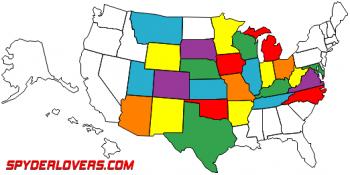
2022 RT Sea To Sky
--------------------------------
-
Very Active Member


BroderP, sir, the most basic question when comparing different brands and upgrades of suspension is specifically what external adjusters are the dampers equipped with.
Note that I said external adjuster or as we call them on race bikes, “clickers”.
Pretty much, all modern high performance dampers can be tuned for compression and rebound forces. We do this by altering the diameter, thickness, quantity, and stacking sequence of the valving shims. Essentially, the internal valving for both compression and rebound are a coarse way to tune the damper. Regardless, the shim stacks must be very correct, since the external clickers are a fine adjustment, to truly dial in the setup.
What I described above is for typical long time proven dampers with external adjustments. There is newer damper designs that allow a wider range of adjustment via external adjusters. Last I knew, they were not available for Spyders.
In regards to your asking, M2 vs Elka. Elka shocks for Spyders should have the rebound adjuster at the chrome shafts end. A compression adjuster, if equipped, will be at the shock body end, between the shock body and reservoir. Most non reservoir style shocks are not equipped with an external compression adjuster. Compression adjusting utilizes damper fluid flow from the shock body into the reservoir body on account of the chrome shaft displacing fluid during compression.
No idea why M2 uses the term damping, but would guess it is a typical rebound clicker, controlling fluid freebleed around the shim stacks.
-
Active Member


 Originally Posted by troop

Basically opposite functions. Compression Damping is how quickly or slowly the spring is allowed to compress. Rebound Damping is how quickly or slowly the spring extends back to its original position. You can adjust the damping force or rate of your shock when it tries to compress and when it rebounds.
Troop is correct in how the compression dampening works with the knob on the reservoir for stage 3 Elka and the stage 4 Elka and stage 5 have the rebound dampening screw at the bottom of the shock rod.
https://www.elkasuspension.com/spyder/stage-4/
For a verbal explanation you can check out the accelerated technology videos where he explains how they are to be used.
My mistake the Elka 2 include Rebound dampening but not both, the Stage 3 Compression Dampening and Stage 4 & 5 have both.
Last edited by AndysF3S; 01-11-2024 at 05:13 PM.
-
Active Member


 Originally Posted by troop

Basically opposite functions. Compression Damping is how quickly or slowly the spring is allowed to compress. Rebound Damping is how quickly or slowly the spring extends back to its original position. You can adjust the damping force or rate of your shock when it tries to compress and when it rebounds.
This was very helpful.  Why because it explaned to me that both Rebound and Compression are both forms of "Damping". The fact M2 just calls it Damping was confusing because many Goolge searches pulled up "compression" when along with the Word damping.I had not made this connections. Why because it explaned to me that both Rebound and Compression are both forms of "Damping". The fact M2 just calls it Damping was confusing because many Goolge searches pulled up "compression" when along with the Word damping.I had not made this connections.
 Originally Posted by PMK

BroderP, sir, the most basic question when comparing different brands and upgrades of suspension is specifically what external adjusters are the dampers equipped with.
Note that I said external adjuster or as we call them on race bikes, “clickers”.
Pretty much, all modern high performance dampers can be tuned for compression and rebound forces. We do this by altering the diameter, thickness, quantity, and stacking sequence of the valving shims. Essentially, the internal valving for both compression and rebound are a coarse way to tune the damper. Regardless, the shim stacks must be very correct, since the external clickers are a fine adjustment, to truly dial in the setup.
What I described above is for typical long time proven dampers with external adjustments. There is newer damper designs that allow a wider range of adjustment via external adjusters. Last I knew, they were not available for Spyders.
In regards to your asking, M2 vs Elka. Elka shocks for Spyders should have the rebound adjuster at the chrome shafts end. A compression adjuster, if equipped, will be at the shock body end, between the shock body and reservoir. Most non reservoir style shocks are not equipped with an external compression adjuster. Compression adjusting utilizes damper fluid flow from the shock body into the reservoir body on account of the chrome shaft displacing fluid during compression.
No idea why M2 uses the term damping, but would guess it is a typical rebound clicker, controlling fluid freebleed around the shim stacks.
Lots of info and ideas for further searching online. The chrome shaft end 'clicker' adjustments are therefore REBOUND DAMPENING, while any clicker on the shock body side will be COMPRESSION DAMPING. This makes so much sense now.
 Originally Posted by AndysF3S

Troop is correct in how the compression dampening works with the knob on the reservoir for stage 3 Elka and the stage 4 Elka and stage 5 have the rebound dampening screw at the bottom of the shock rod.
https://www.elkasuspension.com/spyder/stage-4/
For a verbal explanation you can check out the accelerated technology videos where he explains how they are to be used.
My mistake the Elka 2 include Rebound dampening but not both, the Stage 3 Compression Dampening and Stage 4 & 5 have both.
Thanks! The link was very helpful. All the information presented will make comparisons easier to understand. So it does indeed seem like the M2 shocks are the equivalent to the Elka Stage 2. I do like the Rebound clicker used on the M2 better than Elka. It would be nice if Elka or M2 could make a shock to order, they have all the parts. I'd want a shock with remote preload and rebound. M2 doesn't have remote preload and Elka makes you pay for Compression Dampening (stage 4) to get this feature.
Last edited by Peter Aawen; 01-11-2024 at 11:36 PM.
2023 Spyder F3-S, Manta Green
2023 Ryker 600 ACE, Black on Black (The wife's toy  )
2020 Kawasaki Z900, Candy Plasma Blue
-
Very Active Member


Regarding the two shock manufacturers you mentioned, as you noticed each chose a different means of moving the internal rebound needle within the chrome shock shaft.
Both styles, the screw type in the eyelet clevis, and the large knob style both move the rebound freebleed needle either more open or less open.
The screw style, or screw style with a small knob, utilizes a tapered end on the screw. As the screw type clicker is moved in or out, the taper will move the rebound needle within the chrome shaft. One direction restricts flow, opposite direction increases flow. There is a limiting stop, that prevents the screw adjuster from being removed accidentally.
The large knob style typically utilizes a more complex design. Often, the large knob when rotated will move a pin up or down. That pin sits at the end of the rebound needle, and is perpendicular to the chrome shaft. The chrome shaft is slotted to prevent the pin from rotating with the knob. As the knob is adjusted, this pin is slid up or down in the slot, thereby moving the rebound needle to increase or decrease rebound freebleed flow.
Having worked on both styles many times, each has merits and demerits.
The benefit of the large knob style is no tools are needed, if the adjuster moves freely from click to click of adjustment.
The demerit of the screw type is that you need a screwdriver for adjusting.
With use, and both types exposed to the elements, each style could be fouled from moisture, grit, etc. Generally though, the screw type utilizes a small well fit and well sealed O ring to prevent debris from locking the adjuster. The large knob style, may also be O ring sealed, but with more exposed surfaces that move, they can become more problematic over time.
One consideration you have not mentioned is coatings applied to the metal components. Most companies selling Spyder shocks are using low cost, and well proven for durability, chrome plated steel shafts. No lightweight coated aluminum shafts, nor any of the high performance coatings such as DLC, Titanium Nitride, or others.
Coatings, such as Type 1 anodize for not only corrosion protection but appearance should be used on all non wear type aluminum surfaces. Untreated aluminum will corrode, even on a street driven Spyder.
Aluminum wear surfaces, such as shock bodies, and reservoir bodies often get a Type III hard coat anodize to lessen wear and provide corrosion resistance.
Companies that utilize steel shock bodies, use various coatings to prevent external corrosion. Some manufacturers may coat the internal bore of the steel shock body, but other manufacturers will run the piston band on a honed shock body bore.
Regardless, even for street shocks, corrosion protection matters. Realize also, fancy anodized colors do fade over time AND using an improper type soap when cleaning can etch away the anodize surface.
-
Active Member


What's the benefit of having Rebound over Low Speed Compression? Is Rebound less important?
I'm sizing up some Elka shocks and they do not offer a shock with a Dual Rate Spring and Rebound unless you go with the Stage 4 or above.
Stage 2 has Rebound, but not Dual Rate Springs.
Stage 3 has Dual Rate Spring and Low Speed Compression but no Rebound.
It seems odd that a lot of basic springs offer Rebound but it's an upgrade for Elka. Rebound from my understanding helps the wheel stay planted to the ground when riding through bumps and such and helps smooth out the ride.
Last edited by Peter Aawen; 01-12-2024 at 02:36 PM.
2023 Spyder F3-S, Manta Green
2023 Ryker 600 ACE, Black on Black (The wife's toy  )
2020 Kawasaki Z900, Candy Plasma Blue
-
Active Member


 Originally Posted by broderp

What's the benefit of having Rebound over Low Speed Compression? Is Rebound less important?
I'm sizing up some Elka shocks and they do not offer a shock with a Dual Rate Spring and Rebound unless you go with the Stage 4 or above.
Stage 2 has Rebound, but not Dual Rate Springs.
Stage 3 has Dual Rate Spring and Low Speed Compression but no Rebound.
It seems odd that a lot of basic springs offer Rebound but it's an upgrade for Elka. Rebound from my understanding helps the wheel stay planted to the ground when riding through bumps and such and helps smooth out the ride.
You have it right...and it can be dialed in anywhere from soft to harsh with the rebound adjustment. If you ride aggressively, you want the be on the harsher side, so I'm told. If not, a softer ride can be dialed in.
John B.
Current ride: 2020 Spyder RT-s Petrol Metallic Blue dark with OEM top case
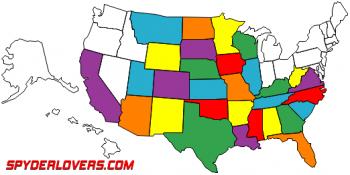 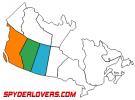
-

Looks like you might have gotten your question answered, but I'll still share my initial impressions about your original question:
Technical Suspension Question - is Damping the same as Rebound?
In a nutshell, "Damping" is WHAT happens, "Rebound" is WHEN it happens. There is also a "Compression" option for the WHEN part.
Some manufacturers do not offer ANY adjustments to damping, others might offer adjustments for compression, rebound or even both.
Note that all of these are independant of spring preload (or ride height) adjustments.
.
HER ride:
2017 RT-S SE6 Pearl White
My rides:
2000 Honda GL1500SE
1980 Suzuki GS850G
-
Very Active Member


 Originally Posted by broderp

What's the benefit of having Rebound over Low Speed Compression? Is Rebound less important?
I'm sizing up some Elka shocks and they do not offer a shock with a Dual Rate Spring and Rebound unless you go with the Stage 4 or above.
Stage 2 has Rebound, but not Dual Rate Springs.
Stage 3 has Dual Rate Spring and Low Speed Compression but no Rebound.
It seems odd that a lot of basic springs offer Rebound but it's an upgrade for Elka. Rebound from my understanding helps the wheel stay planted to the ground when riding through bumps and such and helps smooth out the ride.
Regarding rebound, compression, preload, and spring rate, they ALL are factors in keeping the wheel planted to the ground as you mentioned.
If the spring rate is too firm, the tire kind of skips over bumps since the firmness upsets the chassis.
Spring rate to soft, and the ride can become vague with suspension allowing the chassis to wallow in various directions of both pitch and roll.
Consider though, that many times a slightly too firm spring setup is better for performance riding than a too soft of a spring.
Taking a spring, that is too soft and adding preload will increase the initial force and end force, the springs actual rate is not increased. Over preloading a spring, adds harshness on the initial stroke, and can sometimes lessen the wheels ability to follow the ground.
As for damping clickers, these days, true high performance dampers have at a minimum, high speed compression, low speed compression, and rebound. Some now even have high speed rebound.
Of the clickers, rebound is the most important. Unless the rebound circuit utilizes a check valve within the circuit, adjusting rebound also changes compression damping. In a non check valve rebound circuit, the damping fluid freebleeds in both directions thru the freebleed port of the rebound adjuster. Granted, the change is felt more in the rebound direction, than compression direction, but it is happening.
The low speed compression adjuster utilizes a small shim stack that regulates fluid flow. Closing the LSC adjuster increases flow thru that compression adjuster shim stack. There is not change in rebound since the compression adjuster valve body utilizes a free flowing check plate, to help reduce fluid cavitation during damper extension.
A high speed compression adjuster utilizes a preloaded spring that supports the LSC shims. Upon needing enough HSC flow, the compression adjuster spring compresses, allowing the pressure in the damper body, to blow off into the reservoir body.
On extension, fluid within the reservoir is pushed back into the shock body, via the pressure of the nitrogen.
Each parameter mentioned above, is a tuning parameter we deal with when building and setting up suspension.
The reality of Spyder suspension is that it is not working hard to get decent performance. Spyders are on road vehicles. Typically, even the worst bumps are fairly low shaft velocities for the damper shaft, at maybe 40 inches per second, but often more in the 20 ips range. Other applications, not Spyders, we see 150 or more ips. Point being, even performance shocks, without clickers, that have decent internal valving and correct spring rates, can be most excellent to ride. Consider too, a Spyder is not a racer, and with that, the flexy chassis hampers even the best suspension.
A good book to learn from is the Race Tech Suspension Bible. You might even consider some of the other brand performance suspension that is available. Possibly Race Tech shocks. Myself, the two you like would not make my list, and if they did, no way they would be at the top. But, it is your Spyder and money. All the best in your quest.
-
Active Member
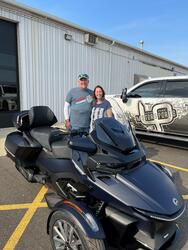

I love these threads where the members here flood us with knowledge. Even when my eyes glaze over and I start drooling a little because I can't follow what is being said, I still learn just a little.
Trying to be funny, but truthfully, thank you guys for sharing your knowledge.
-
Very Active Member


 Originally Posted by Jesster72

I love these threads where the members here flood us with knowledge. Even when my eyes glaze over and I start drooling a little because I can't follow what is being said, I still learn just a little.
Trying to be funny, but truthfully, thank you guys for sharing your knowledge.
Absolutely, your welcome. Sorry it got technical and glazed your eyes. Guess that having been tuning and rebuilding shocks since the mid 1970s, almost 50 years, helped with technical aspects of my replies.
-
Active Member
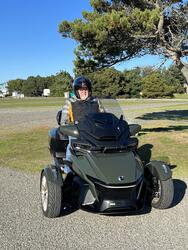

Question:
For your average two up multi-week touring on a RT, (2023) is there a great benefit of upgrading to these very expensive aftermarket shocks before the stock shocks wear out?
Thank you!
-
Very Active Member


 Originally Posted by BoatFixx

Question:
For your average two up multi-week touring on a RT, (2023) is there a great benefit of upgrading to these very expensive aftermarket shocks before the stock shocks wear out?
Thank you!
The absolute honest answer, and I do not sell shocks, but read and understand the snake oil claims by some shock manufacturers, that become parroted and recited by owners, is that regardless of what shock manufacturers claim, the answer is, it depends.
The height of the rider(s), the weight of the rider(s), the handling expectations of the rider(s), the budget, and what other previous mods have been done are all deciding factors.
Lighter riders, or two uppers, have less need for performance shocks. Shorter riders, or two uppers, have less need for performance shocks. Those are both rider size concerns where heavier or taller folks raise the center of gravity, and can induce more front suspension geometry changes when riding.
As for the budget comment, simply performance shocks can be expensive. Not sure if King is still offering Spyder shocks, but those are very possibly the highest quality and most expensive shocks available. So if shopping, do your homework on fact, not promises.
Regarding already installed mods, some mods like running automotive tires can compliment aftermarket shocks. Other mods, such as a swaybar change, may not be ideal if replacement shocks utilize a firmer spring.
In regards to handling expectations, that is even more difficult to factor in. Many Spyder owners / riders claim to have a spirited or aggressive riding style. Good luck on that one, since everyone, and everyones perceived ability, AND everyones true ability to ride hard is often more mythical than fact.
To help with a best answer beyond “it depends”, for a solo rider above 230 pounds, for a tall rider above 6’3”, for a truly performance oriented riding style, then yes, those folks could consider a high quality shock upgrade.
Go with facts, not hype, myths or snake oil sales folks.
-

Adding to PMK's post (but not copying its entirety), I define "spirited riding" as reaching the point of breaking friction with rear tire is a corner (a slight drift is noted), or constantly running into the computer taking control (e.g., the Nanny kicks in). Most riders are seeking less lean in the corners and/or need a higher weight carrying capacity. The first challenge can be addressed via addition of a stiffer torsion/anti-sway/stabilzer bar. The second needs a spring with a higher spring rate to carry the load. Load mass (weight of rider, passenger and cargo) and height, as PMK stated, all affect the Spyder's handling. a 350 lb, 6'5" rider is going to need something different than a 140 lb, 5'2" rider.
As an example, I frequent the "spirited" riding style, as described above. I am 175 lb, 5'10", in riding gear. I have ridden F3 models (S, T and L) since they were introduced in 2015. The first modification I make is to replace the stock stabilizer bar with an RT take-off. This provides an increase in torsional stiffness of 40%: flatter through the twisties but not head-bobbling harshness. The stock rear shock on the F3-S was replaced with a Fox Podium 2.0, mainly for load carrying capacity and adjustability. I have not replaced rear shocks on either the T of L versions: they have airbag compensation for increased load carrying.
pauly1 - SpyderDeb's 'wrench'
2018 F3-T & 2015 F3-S Road Warrior Foundation Tribute customs
IBA #48220 SS1000 BB1500
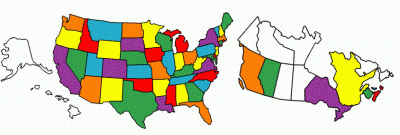
2015 F3-S , OEM na Basic Black with Custom Wrap
 Forum Forum
 F3 Shop Talk
F3 Shop Talk
 Shock Absorber Technical Questions - is Damping the same as Rebound? & more!
Shock Absorber Technical Questions - is Damping the same as Rebound? & more!
 Posting Permissions
Posting Permissions
- You may not post new threads
- You may not post replies
- You may not post attachments
- You may not edit your posts
-
Forum Rules
|




 )
)
 Reply With Quote
Reply With Quote

 Why because it explaned to me that both Rebound and Compression are both forms of "Damping". The fact M2 just calls it Damping was confusing because many Goolge searches pulled up "compression" when along with the Word damping.I had not made this connections.
Why because it explaned to me that both Rebound and Compression are both forms of "Damping". The fact M2 just calls it Damping was confusing because many Goolge searches pulled up "compression" when along with the Word damping.I had not made this connections. 



